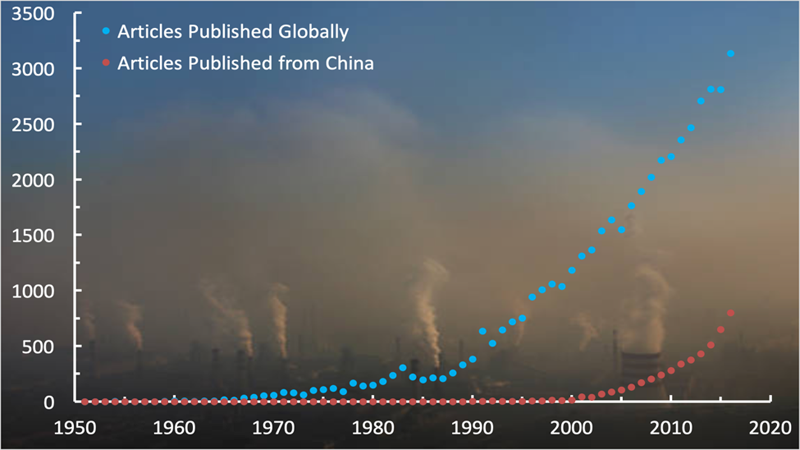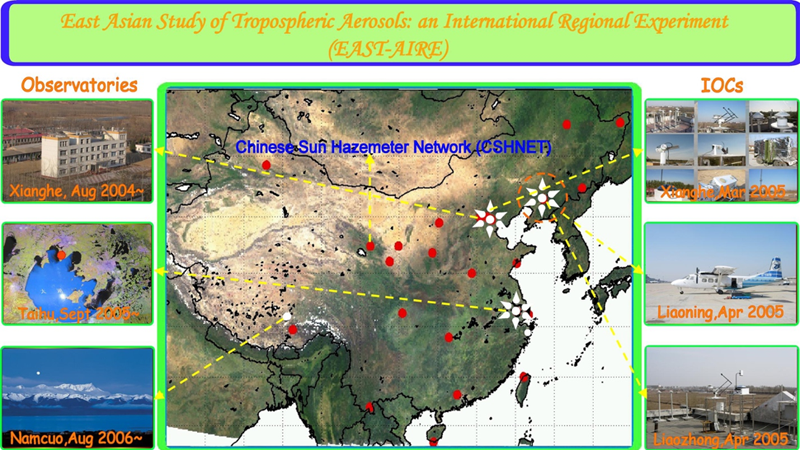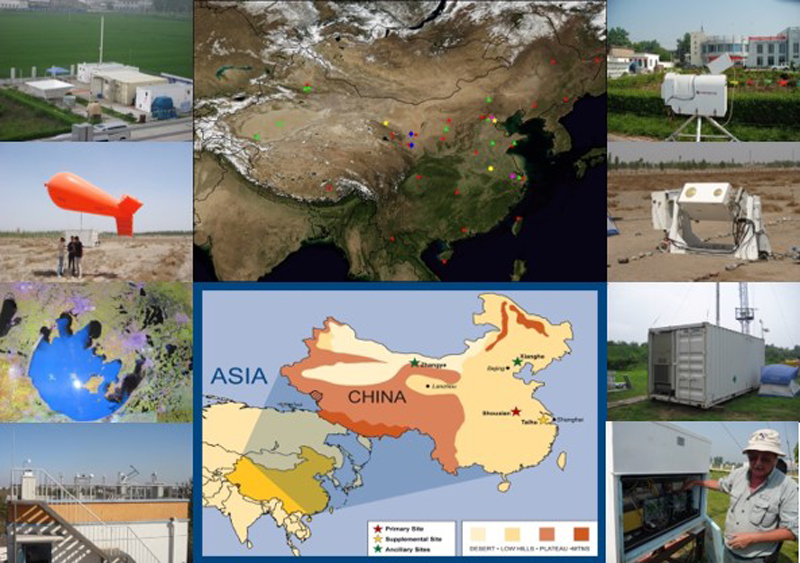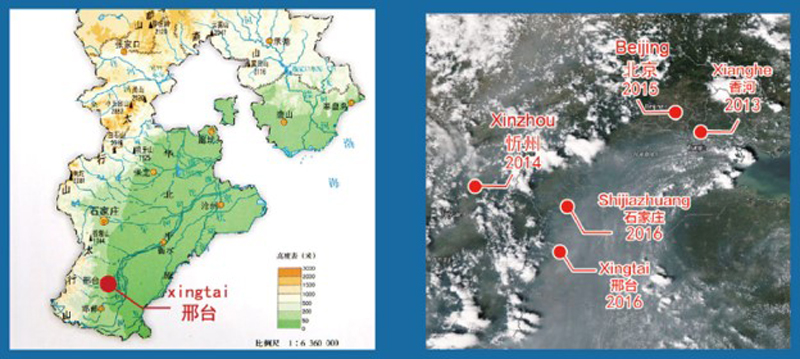Aerosols have been known to interact with Earth’s energy and water cycles for well over a century. Classical theories such as those proposed by Aitken [1880], Köhler [1936], and Mie [1908] laid the foundation for understanding the impact of aerosols on cloud formation and light scattering.
These theories are the backbone of two primary aerosol effects—aerosol-radiation interaction (ARI) and aerosol-cloud interaction (ACI)—through which both weather and climate are affected. Both effects, however, remain largely uncertain even after over one hundred years of investigations, which have intensified in recent decades.
Scientific studies concerning aerosols have become a fast-developing discipline.
Those induced by anthropogenic aerosols have been recognized as the largest uncertain forcing in the climate system. All editions of the Intergovernmental Panel on Climate Change Assessment Reports have recognized that this hinders the projection of future climate in general circulation models.
As such, scientific studies concerning aerosols have become a fast-developing discipline—arguably the fastest in Earth sciences. There has been a tenfold increase around the world in terms of the number of publications per year since the early 1990s and a hundredfold increase in China since 2000!

While aerosols are ubiquitous around the globe, their concentrations and composition vary considerably.
While aerosols are ubiquitous around the globe, their concentrations and composition vary considerably. Examples range from dust in the semi-arid regions of the sub-tropics to smoke in the Amazon and central Africa, and pollution in Asia (see central section of image below). Their impact on weather and climate changes drastically in both sign and magnitude depending on aerosol properties and meteorological settings.
Most aerosol-laden regions are also monsoon-active regions, where aerosols and the monsoon climate have strong intercorrelations through which rainfall is both affected by and affects aerosols through the ARI, the ACI, and scavenging [Li et al., 2016].
The principles and theories behind ARI are well-established, although there still exist large uncertainties in the knowledge of aerosol (optical) properties themselves. The principles and theories behind ACI still fall far behind. As such, an increasing number of investigations on ACI are taking place around the world. Many of the hot spots for such investigations are in Asia [Li et al., 2019], where the aerosol loading is heavy and aerosol properties (both optical and hygroscopic) are complex, as are meteorological conditions.

Asia is the world’s most populated region, home to approximately 60 percent of the world’s population. Their development has inevitably generated masses of anthropogenic aerosols compounded by heavy, nature-induced mineral/dust aerosols. The influences of Asian aerosols cover a large part of the Asia-Pacific Rim. In East Asia, aerosols emitted in China are of particular significance due to its large territory, high population density, and rapid economic development.
Prior to the current millennium, there were few ground-truth aerosol observations, making assessments of the ARI and the ACI impossible. The quality of satellite-retrieved aerosol optical depths (AODs) has also remained largely unknown because of the lack of in situ observations to constrain the satellite retrieval, an ill-posed problem requiring numerous assumptions concerning aerosol and surface properties.
Tremendous progress has been made in the last two decades, as attested by the exponential increase in the number of aerosol-climate publications, from almost nil prior to the 1990s to over 1000 per year now. Journal of Geophysical Research: Atmospheres has made an important contribution to the literature with three special collections of around 100 articles, in addition to many more outside of the special collections. Here are some highlights based on the publications in the special collections.
East Asian Study of Tropospheric Aerosols: An International Regional Experiment (EAST-AIRE)
EAST-AIRE, jointly sponsored by NASA (2004–2013), the US National Science Foundation, and the Chinese Ministry of Science and Technology, sought to gain a basic knowledge of aerosol loading and optical properties based on measurements made from a newly established nationwide aerosol observation network and intensive field experiments focused on aerosol physical and optical properties for both validating satellite retrievals in the regions of major aerosol sources in Asia and understanding the ARI across Asia-Pacific Rim.

In the populated eastern half of China, the mean aerosol optical depth was found to range from 0.6 to 0.8, which is four times the global mean over land. New information was used to reveal major errors in satellite-retrieved AOD.
Combining ground and satellite measurements led to the estimation of the aerosol single-scattering albedo, a key factor for satellite remote sensing and quantifying the ARI in the atmosphere. Aerosols were found to reduce the amount of solar radiation reaching the ground by as much as half of the amount of solar radiation blocked by clouds, or 20 watts per square meter (24-hour mean), four times the global mean. Nearly the same amount of solar radiation is absorbed by aerosols in the lower atmosphere, leading to almost nil forcing in the atmosphere-surface system.
The radiation-induced thermal contrast between the boundary layer (hosting the bulk of aerosols) and the surface amounts to 38 watts per square meter (or 76 watts per square meter day-time mean) that may drastically increase the stability of the atmosphere and inhibit pollution dispersion and the development of convection.
East Asian Study of Tropospheric Aerosols and Their Impact on Regional Climate (EAST-AIRC)
Following the initial success of the EAST-AIRE, a more comprehensive investigation entitled EAST-AIRc was conducted in 2008, thanks to the deployment of the United States Department of Energy’s Atmospheric Radiation Measurement (ARM) Mobile Facility (AMF), with the support of the Chinese Academy of Sciences and China Meteorological Administration.

Taking advantage of the large number of leading-edge atmospheric observation instruments of the AMF, a complete suite of aerosol, cloud, and atmospheric parameters were measured during the 8-month-long field campaign conducted in the southern and northern parts of eastern China, as well as at a site in the Gobi Desert in western China, supplemented by a denser ground-based network measuring aerosol optical and chemical compositions (see map above from Li et al. [2011], Figure 1).
Unprecedented, rich measurements allowed for in-depth investigations of the aerosol impact on both energy and water parameters with a few ground-breaking observations and scientific findings. They include, among many others, the first direct cloud profiling, which laid a foundation for developing a climatology of cloud vertical structure; the first observation-based estimate of aerosol indirect effect on clouds; discoveries of opposite effects of aerosols on different cloud regimes; systematic underestimation in retrievals of cloud optical depth in the region; and the identification of limitations of and improvements in cloud parameterization schemes used in numerical weather and climate models.
East Asian Study of Tropospheric Aerosols and their Impact on Regional Clouds, Precipitation, and Climate (EAST-AIRCPC)
As one of the most challenging climate problems, aerosol-cloud-precipitation interactions (ACPI) have been targeted in the third phase of the series of studies named EASTAIRCPC, sponsored by the Chinese Ministry of Science and Technology, the National Natural Science Foundation of China, and the US National Science Foundation.

More intensive and extensive field experiments were conducted using ground-based, airborne, and space-borne observations, plus analyses of long-term, routine meteorological and environmental data. More focus was placed on the vertical distributions of aerosol, cloud, and meteorology throughout the planetary boundary layer (PBL) to gain a deeper understanding of the impact of aerosol-PBL interactions (API) on cloud and precipitation, as well as air quality [Li et al., 2017].
The API leads to a significant reduction in the PBL height, worsening surface air quality, although the AOD showed little or even declining changes. The API was also found to play a significant role in ACPI, attested by the findings of aerosol suppression of light rainfall; delays in the occurrence of afternoon thunderstorms and intensification of heavy precipitation in the late afternoon and evening; and attribution and quantification of the role of aerosols to historical floods, among others. Anthropogenic aerosols also result from urbanization, whose joint effects have also been investigated by means of observation analysis and modeling.
Studying the East Asian region is an ideal testbed of the human impact on the earth’s climate system, as well as weather and environment.
These three special collections in the Journal of Geophysical Research: Atmospheres are part of a fast-growing body of literature about atmospheric aerosols, their interactions with the environment, and their impact on regional climate. Since this has significant impacts on the quality of life for people living in the region and in downstream regions, studying the East Asian region is an ideal testbed of the human impact on the earth’s climate system, as well as weather and environment.
—Zhanqing Li ([email protected]; ![]() 0000-0001-6737-382X), Editor, JGR: Atmospheres, and Department of Atmospheric & Oceanic Science and Earth System Science Interdisciplinary Center, University of Maryland, College Park, USA
0000-0001-6737-382X), Editor, JGR: Atmospheres, and Department of Atmospheric & Oceanic Science and Earth System Science Interdisciplinary Center, University of Maryland, College Park, USA
Citation:
Li, Z. (2020), Intensified investigations of East Asian aerosols and climate, Eos, 101, https://doi.org/10.1029/2020EO140980. Published on 09 March 2020.
Text © 2020. The authors. CC BY-NC-ND 3.0
Except where otherwise noted, images are subject to copyright. Any reuse without express permission from the copyright owner is prohibited.

